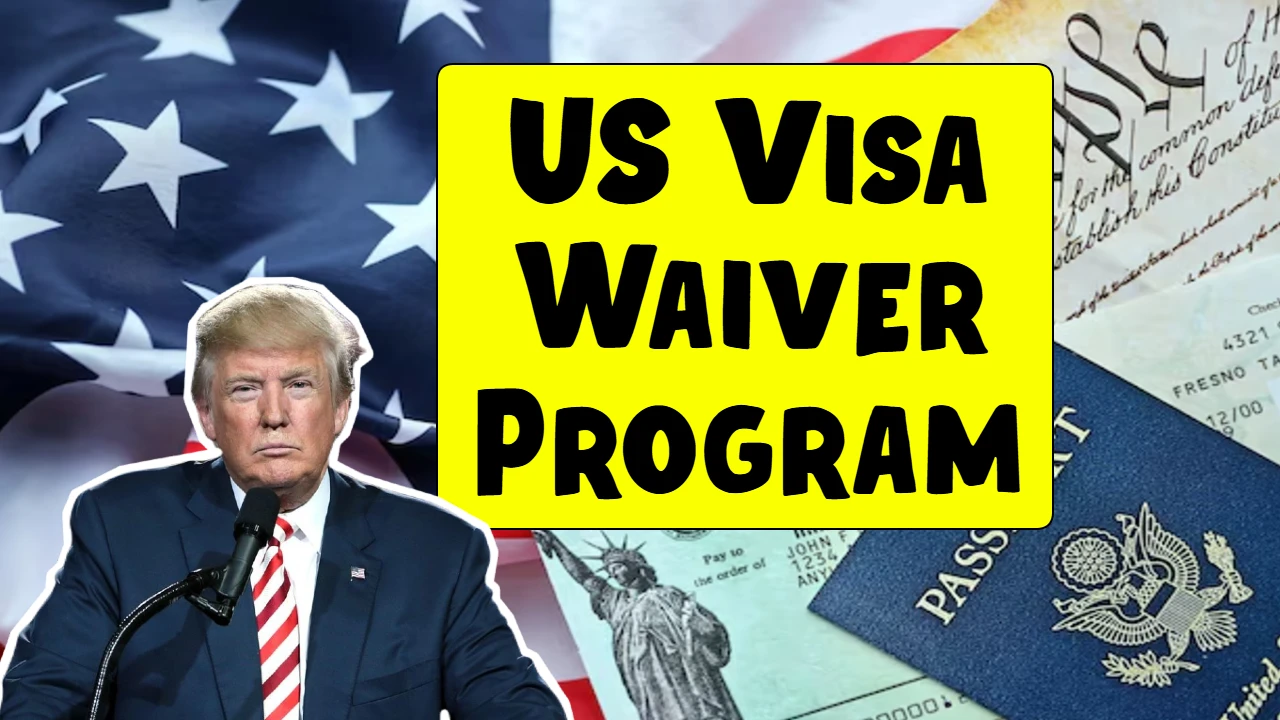US Visa Waiver Program 2025 Traveling to the United States has always required visitors to obtain a visa, but the Visa Waiver Program (VWP) offers a simplified alternative for citizens of certain countries. Under this program, eligible travelers can visit the United States for tourism or business purposes for up to 90 days without needing to apply for a traditional visa. This initiative aims to promote international travel while maintaining strict security standards. In 2025, the U.S. government has updated the list of participating countries, reflecting both geopolitical shifts and new security evaluations. This article explores the program in detail, providing an overview of its benefits, eligibility requirements, updated country list, and important travel considerations.
What is the Visa Waiver Program?
The Visa Waiver Program is administered by the U.S. Department of Homeland Security (DHS) in collaboration with the Department of State. It allows travelers from designated countries to enter the U.S. without a visa, provided they meet specific requirements. The main purpose of this program is to facilitate smoother and more efficient travel for low-risk countries that maintain high security standards and cooperate closely with U.S. authorities on law enforcement and border security.
It’s important to note that the Visa Waiver Program is not a free pass to enter the country. Visitors must still apply for travel authorization through the Electronic System for Travel Authorization (ESTA) before their trip. ESTA helps screen travelers before they arrive, adding a layer of protection to U.S. borders while keeping the process fast and convenient for travelers.
Requirements to Travel Under the Visa Waiver Program
To travel under the VWP, a person must satisfy the following conditions:
- Be a citizen of a Visa Waiver Program country.
- Possess a valid Electronic Passport with an embedded chip.
- Apply for and receive ESTA approval before traveling.
- Intend to stay in the United States for 90 days or less.
- Visit must be for tourism, business, or transit purposes.
- Must hold a return or onward ticket.
It is also important that travelers have not violated U.S. immigration laws in the past, and they must not pose any security or health risks.
Updated List of Eligible Countries – 2025
As of 2025, the United States has reaffirmed its commitment to welcoming low-risk travelers from partner nations. The updated list includes 41 countries that meet all the security and policy criteria set by the U.S. government. The following table includes the complete list of eligible countries under the Visa Waiver Program for 2025:
| Region | Country Names |
|---|---|
| Europe | Andorra, Austria, Belgium, Croatia, Czech Republic, Denmark, Estonia, Finland, France, Germany, Greece, Hungary, Iceland, Ireland, Italy, Latvia, Liechtenstein, Lithuania, Luxembourg, Malta, Monaco, Netherlands, Norway, Poland, Portugal, San Marino, Slovakia, Slovenia, Spain, Sweden, Switzerland, United Kingdom |
| Asia-Pacific | Australia, Brunei, Japan, New Zealand, South Korea, Singapore, Taiwan |
| South America | Chile |
This list reflects both long-term VWP members and more recent entrants. Some countries have been under review for compliance with updated security standards, and any changes in future will be reflected on official U.S. government platforms.
How to Apply for ESTA Authorization
Even though a visa is not required under the VWP, travelers must apply for ESTA online before departure. The process is simple and usually takes just a few minutes to complete. It requires travelers to provide:
- Passport information
- Travel itinerary
- Contact details
- Answers to security-related questions
The ESTA is typically valid for two years or until the passport expires, whichever comes first. During this period, travelers can make multiple visits to the United States, provided each stay does not exceed 90 days.
Benefits of the Visa Waiver Program
The Visa Waiver Program offers several advantages to travelers and the U.S. government:
- Faster travel processing and entry into the United States
- Encourages tourism and business relations
- Strengthens diplomatic and economic ties
- Reduces the workload on U.S. embassies and consulates
- Enhances mutual security collaboration between partner countries
For travelers, it’s a convenient and cost-effective way to experience the U.S. without the delay of traditional visa processing.
Frequently Asked Questions (FAQ)
1. Do I still need a passport if I travel under the Visa Waiver Program?
Yes, travelers must have an electronic passport with a digital chip and machine-readable features.
2. How long can I stay in the U.S. under the VWP?
You can stay up to 90 days per visit for tourism, business, or transit.
3. Is ESTA approval guaranteed for all citizens of eligible countries?
No. ESTA applications may be denied based on travel history, criminal records, or security concerns.
4. Can I work in the U.S. under the Visa Waiver Program?
No. The VWP is only for tourism, business meetings, and similar non-employment purposes.
5. Can I extend my stay beyond 90 days?
No. The stay period under VWP cannot be extended. You must leave and re-enter or apply for a visa if needed.
US Visa Waiver Program
The US Visa Waiver Program continues to offer a streamlined way for citizens of select countries to visit the United States without a traditional visa. With the updated list of eligible countries in 2025, travelers from these nations can plan short-term visits for tourism or business with greater ease and efficiency. However, it is essential to comply with all requirements, especially the mandatory ESTA authorization, and ensure that the visit remains within the permitted guidelines. As international travel dynamics evolve, staying informed about changes to programs like VWP is crucial for hassle-free travel experiences.
This article has provided all the essential details you need to know about the Visa Waiver Program, including updated country eligibility, application processes, and travel tips. Always refer to the official U.S. Department of Homeland Security or embassy websites for the most current and accurate information before planning your trip.
Disclaimer:
This article is for informational purposes only and does not constitute legal or immigration advice. While efforts are made to keep the content accurate and up to date, readers should refer to official U.S. government sources or consult with a qualified immigration expert for the most current and personalized guidance.






